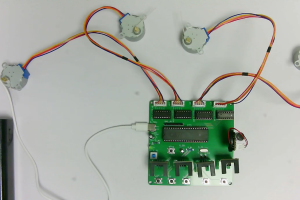设计说明书
总字数:12000+
传统的汽车车窗控制方式通常采用手动开关或简单的电动开关,存在操作不便、易损坏等问题。智能化、自动化已成为汽车发展的重要趋势。汽车车窗作为汽车的重要组成部分,其控制方式也逐渐向智能化、便捷化转变。
为了实现车窗的智能控制,本文旨在设计一款汽车车窗智能控制系统。该系统通过模拟四个车窗的步进电机驱动,结合红外对射管检测车窗周围,当对射管的发射器发出的红外光线被遮挡时,接收器会接收到信号,从而判断车窗周围是否有障碍物。当系统检测到车窗周围有障碍物时,会自动停止车窗的升降。此外,还设计了五个按键来控制车窗。其中一个按键可以控制四个车窗同时开和关,另外四个按键则分别控制四个车窗,从而实现了防夹功能和手动控制功能。
实物测试表明,通过语音识别模块可实现车窗的自动控制功能。该系统的各模块相互配合,可以实现车窗的自动升降、防夹手、一键升降等功能,提高了汽车的安全性和舒适性。
关键词: 车窗控制;防夹功能;单片机;红外对射;语音识别
Abstract
The traditional control methods for car windows usually use manual or simple electric switches, which have problems such as inconvenient operation and easy damage. Intelligence and automation have become important trends in the development of automobiles. As an important component of automobiles, the control mode of car windows is gradually shifting towards intelligence and convenience.
In order to achieve intelligent control of car windows, this article aims to design an intelligent control system for car windows. The system simulates the stepper motor drive of four car windows, combined with an infrared emitter to detect the surroundings of the car windows. When the infrared light emitted by the emitter of the emitter is blocked, the receiver will receive a signal to determine whether there are obstacles around the car windows. When the system detects obstacles around the car window, it will automatically stop the window from lifting. In addition, five buttons were designed to control the car windows. One of the buttons can control four car windows to open and close simultaneously, while the other four buttons control four car windows separately, achieving anti pinch and manual control functions.
Physical tests have shown that the automatic control function of car windows can be achieved through the speech recognition module. The various modules of the system work together to achieve automatic window lifting, anti pinch, one click lifting and other functions, improving the safety and comfort of the car.
Key words:window control; Anti pinch function; Microcontroller; Infrared radiation; speech recognition
目 录
引言
1 绪论
1.1 研究背景及实际意义
1.2 国内外研究现状
1.2.1国内外研究现状
1.2.1国内外研究现状
1.3研究目标
2 系统方案设计
2.1 主要元器件选择
2.1.1 主控模块方案选择
2.1.2语音识别方案选择
2.1.3按键方案选择
2.1.4步进电机方案选择
2.2 整体方案设计
3 硬件电路
3.1 单片机最小系统
3.2 红外对射管防夹电路设计
3.3 按键模块电路
3.4 语音识别模块
3.5 步进电机驱动模块
4 系统程序设计
4.1 编程软件介绍
4.2 系统主流程设计
4.3 独立按键
4.4 步进电机子流程
5 实物测试
5.1 整体实物测试图
5.2 按键控制车窗实物测试
5.3 红外对射管防夹实物测试
5.4 语音控制实物测试
6 总结
致 谢
附 录
附录一:原理图
附录二:PCB
附录三:主程序

